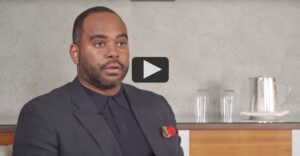See how innocent drinks expands its talent acquisition through Europe
- 8 Min Read
Lena Tailor, Head of Talent at innocent drinks discusses the impact of starting a career development programme and how the UK organisation began its focus on European operations. She also revealed how innocent drinks creates a common culture with offices in five different countries. What should organisations consider when building their talent mobility plans? An organisation […]
- Author: rupert
- Date published: Jul 26, 2017
- Categories

Lena Tailor, Head of Talent at innocent drinks discusses the impact of starting a career development programme and how the UK organisation began its focus on European operations. She also revealed how innocent drinks creates a common culture with offices in five different countries.
What should organisations consider when building their talent mobility plans?
An organisation should consider a couple of things. One of them is the business context you’re operating in – this might seem obvious but sometimes it’s quite easy to look to articles or other organisations and see what they are doing from a talent perspective. As there are so many great and exciting things being done out there, ultimately you have to be something that is right for your business and fits in the context of your business. That was one of the touch points that we had.
When it comes to innocent drinks, our brand is really big. However, as an organisation we are only about 400 people within Europe. We have quite a lean workforce so we can’t offer endless opportunities or suddenly launch a talent mobility plan which encourages moves to all sorts of places as easily as some organisations can.
We are currently expanding to Europe and have a fast-paced and high growth culture which is really exciting. However, we need to be aware of what we can offer and the capabilities we are trying to build for future demands. That is the business context.
The other thing that we need to think of is the purpose of what you are trying to do, what is the purpose of the initiative? For what we were trying to achieve, we could see if we fast forward to the next five years, we will become a much more European business. Having historically just been a UK business with a couple of export markets, we are suddenly becoming much more focussed on European operations.
We realised that we had grown some really great talent organically, and we built a lot of middle and senior managers with functional depth. They have grown through their functions and become quite senior within that. But there was limited flexibility in where they could move – we realised we needed to build more breadth within our culture as we wanted to balance it out.
We listened to our attrition insights and to our people. In some populations we had higher attrition than we would like, we could see that they were leaving and by talking to them we realised it was linked to career progression and being able to navigate the career and see that our next opportunity in innocent drinks wasn’t made clear. We didn’t have a career plan throughout the programme at the time that told them how to move through innocent drinks. I guess that piece of advise is to be clear on what you’re doing and definitely talk to your people, don’t just sit in a room or think it through with a senior employee, because who is it going to impact the most? It is the junior and middle level population which is what we were trying to address a change in.
Read more about talent development
How can a company support staff in making this shift through training, mentoring and coaching?
The first thing we did from a training perspective is that once we decided what we were launching we created a programme with the business called ‘Your Future’ – this was essentially a career development programme.
We helped educate the business on what career development meant for them and what it meant for innocent drinks. Then we ran every single person in the business through a series of training’s to help them understand this.
This painted a picture of what a career life-cycle looks like, the expectations, the length of the time you would expect someone to be in a role, but then also how to move around. So we started introducing concepts such as the career climbing wall which included how to build transferable skills, breadth or depth and how to build potential. They needed to understand these basic things.
Then we let the programme settle into the organisation, and through that we then listened to our people again about what they needed to help them through the opportunities and transitions. Quite quickly, people started to understand what we were offering and they were looking at ways to navigate that. Our L&D programmes were adjusted to reflect this need.
We also heard a need for mentoring – I launched a mentoring programme about a year ago. This was by listening to people and finding something that worked for us. So our mentoring programme might not feel as formal as some other organisations, it is definitely not intended to create promotion or about hierarchy as we have people mentoring people at the same level. We made it into something that worked more for our environment and felt natural.
We also offer coaching but that’s much more selective because in that you need to be really clear when you have a coaching need and the investment linked to that – but that is also not reserved just for high potential people. We support our staff in lots of different ways through the different transitions in career development that don’t really have a ‘one principle fits all’ approach.
What benefits do cross-functional and cross-location mobility have on the individual and organisation?
The obvious one is about the engagement and retention of talent – but for us, the interesting one is about how much more connected we’ve become and how we can share knowledge and experience through cross-functional moves essentially.
Lots of people have taken that practice from the UK and then moved to a small region. They’ve taken some of the best practices of being in a slightly bigger organisation and all the processes and economies of scale we can achieve when we are big and adapted it to a smaller business. But at the same time, they have learnt about being in a more entrepreneurial environment and how to make things happen quickly. It has really helped people adapt their style and become collaborative to provide lots of exposure and growth. It has lots of benefits to both individual and the organisation.
How does innocent drinks capture and capitalise on the ‘diversity of thought’ created through team members who have become ‘experts’ in different areas of the business?
The best example we have of this is when we’ve seen middle or senior managers taking on bigger roles which then interface with many areas of the business. It is particularly when we see the benefits of how they can manage the tensions between supply and demand because they have seen different sides of business.
They also have great facilitation skills because they have the relationship and knowledge of different parts of the business. I think it just often creates much more rounded leaders, so we are seeing people in those sorts of slightly middle senior management positions and being a bit more balanced in their approach and selecting their style to meet differing needs. I think it is helping us grow whilst staying true to who we are.
With five offices in different countries, how do you ensure you create a common culture?
Our values, purpose and vision as a combination are central to everything we do. We don’t expect every office to become a clone of each other – everyone has a slightly different culture that makes them slightly unique.
But what they will have is a similar look and feel. The underlying story of innocent drinks connects them, why we are here, what is the mission and how they contribute to that is super clear. That is something that we are strong on with transparent and clear communication.
I can almost guarantee that every employee would be able to name our five values, and they’re not just words they are really embedded into all aspects of the business. So when making decisions, whether it’s hiring people or launching a new product- we look back at our values. Even in how we provide feedback to each other or how we work with suppliers, we will again look back to our values.
Underlying all of this, one of the things that makes us unique and makes you want to keep working for us is about leaving things better than how we find them. That is through some of the charitable work we do, which again is connected to all our different offices and countries. It is also the way we place sustainability into our real business objective – that is a part of every single office that we have.
These are the commonalities that we have that are connected, yet we allow people to be unique and individual within that.








